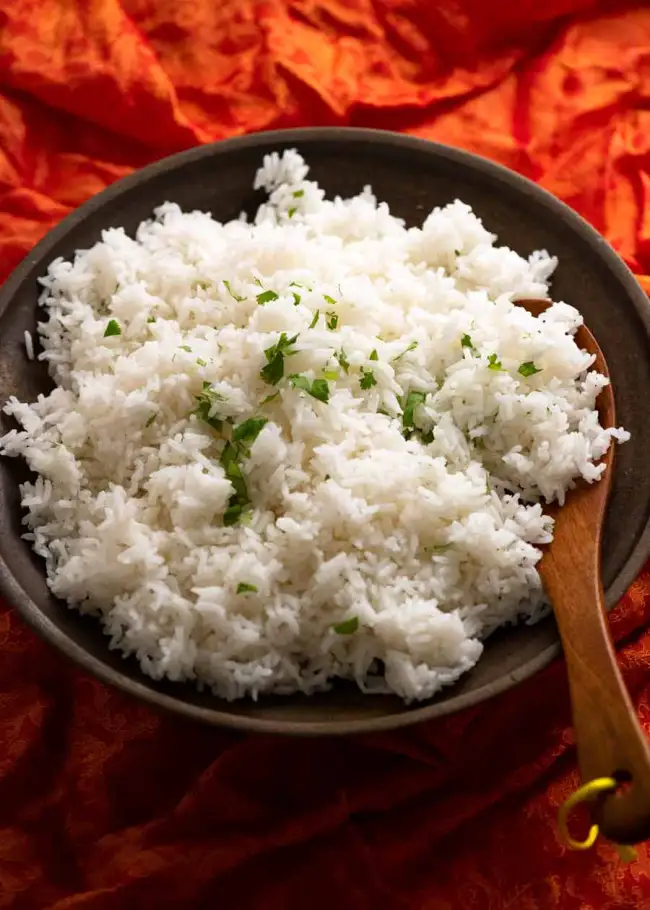Microwaving has become one of the most convenient ways of cooking for many households around the world.
It’s a fast, easy, and energy-efficient method of cooking that even busy individuals with tight schedules can use.
In this guide, we’ll show you how to microwave jasmine rice so you can enjoy this delicious Asian cuisine in the comfort of your own home.

Why You Should Consider Microwaving Jasmine Rice
Microwave cooking is an excellent option for those who are looking for hassle-free and fast preparation methods. Here are some benefits of microwaving jasmine rice:
Saves Time
Time is valuable, especially when it comes to meal preparation. Cooking jasmine rice on a stove top or using a rice cooker requires time and attention. With microwaving, you can prepare your meal in less time without compromising on taste or texture.
Easy Clean-Up
Cooking in a pot or using a rice cooker often leads to splatters and spills that make cleaning up difficult. With microwaving, there’s no mess or need for any additional cookware other than measuring cups and a microwave-safe bowl.
Energy Efficient
Microwave ovens consume less energy compared to stovetops or rice cookers, making them more environment-friendly and cost-effective options.
Step-by-Step Guide on How To Microwave Jasmine Rice
To get started with microwaving jasmine rice successfully, follow these simple steps:
Step 1: Measurements
Measure out your desired amount of jasmine rice by using a measuring cup. The typical serving size is 1/2 cup uncooked (yielding 1 cup cooked) per person. Rinse thoroughly under cold water until the water runs clear.
Step 2: Add Water
In another microwave-safe bowl (preferably glass), add water to soak the rinsed jasmine white/brown/grain/basmati rice. The standard ratio for jasmine white rice is 1:1.5, meaning adding 1 cup of rice and 1.5 cups of water. For brown rice, it’s generally recommended to use a 1:2 ratio (rice to water). For basmati rice, use a ratio of 1:1.75.
Step 3: Cooking
Cover the bowl with a lid or microwave-safe utensil and cook for about 12 to 15 minutes on high heat until the water has been absorbed through the rice entirely.
Step 4: Resting
Once cooking is complete, stir occasionally while letting the rice rest for approximately five minutes.
Pro Tip – Do not remove the lid immediately after cooking as this may result in unevenly cooked jasmine rice or allow essential steam to escape.
Precautions for Microwaving Jasmine Rice
Though it’s relatively safe to cook food in a microwave oven compared to other methods, there are some precautions that you should consider before cooking jasmine rice;
- Use microwave-safe containers or glassware when cooking.
- Be careful when removing heated bowls from microwave ovens; they’ll be hot.
- Avoid using plastic wrap or containers that aren’t labeled as “microwave safe.”
Factors Affecting Cooking Time
Cooking times may differ depending on several factors such as:
- Quantity
- Water-to-rice ratios
- Type of jasmine rice (white/brown/grain/basmati) being cooked
- Microwave wattage
- AltitudeBe sure you pay attention while microwaving your jasmine curry so that it doesn’t become undercooked or burnt due to incorrect settings.
Expert Tips for Perfectly Microwaving Jasmine Rice
Microwave cooking can be tricky at times because different machines operate differently. However, here are some tips that can help you perfect your microwaved jasmine curry:
Use a Microwave Steamer
A microwave steamer can help you cook jasmine curry evenly and without sticking. The steamer will allow the rice to cook correctly even though it lacks the crispy edges that cooking on a stove-top provides.
Let Jasmine Rice Rest Before Removing the Lid
Allowing your jasmine rice to rest after cooking is essential as it helps distribute heat evenly, swap flavors, and absorb steam.
Stir Mid-Cooking
Stirring your jasmine rice mid-cooking prevents sticking or burning. You can divide your cooking time into four sections, stirring each quarter.
Advantages of Microwaving Jasmine Rice
Cooking jasmine rice in a microwave has several advantages;
- Fast preparation and cooking time
- Energy-efficient
- Hassle-free cleaning
- No need for supervision
Disadvantages of Microwaving Jasmine Rice
However, like with most things, there are downsides of microwaving jasmine rice:
- There’s no way to tell what temperature is being used by your microwave oven setting.
- Some people believe microwaved foods lose natural flavor or nutrients during the heating process.
Regardless of its disadvantages, thoroughly cooked microwaved jasmine curry should remain safe to eat since it won’t pose a significant risk to human health when done correctly.
Frequently Asked Questions about Microwaving Jasmine Rice
Can I put raw vegetables in my cooked microwave Jasmine curry?
Yes! Adding raw veggies or proteins like peas/chicken/corn can turn plain old basil chicken into something much more delicious and healthy. You will need to adjust your water-to-rice ratio accordingly based on how much food you’re adding into the bowl.
Is there any nutritional difference between my usual rice cooker method and this microwaving strategy?
No significant nutritional difference has been found between traditional stovetop or electric cooker methods compared with those of today’s microwave cooking.
Can jasmine rice be microwaved in a plastic container?
Not all plastic containers are microwave-safe. You should usually only use containers marked for use in a microwave. If you don’t know if the container is safe or not, it’s safer to err on the side of caution and avoid using it.
Conclusion
Microwaving has proven to be a quick & easy way of cooking jasmine rice, whether you prefer white, brown, or basmati grain types. With this comprehensive guide on how to microwave jasmine rice;—you’re now ready to cook up your own delicious Chinese takeout meals quickly and inexpensively. Use this guide for your next meal and discover how simple preparing healthy Asian cuisine can be!
Jenny has always been passionate about cooking, and she uses her platform to share her joy of food with others. Her recipes are easy to follow, and she loves giving tips and tricks to help others create their own unique culinary creations.

